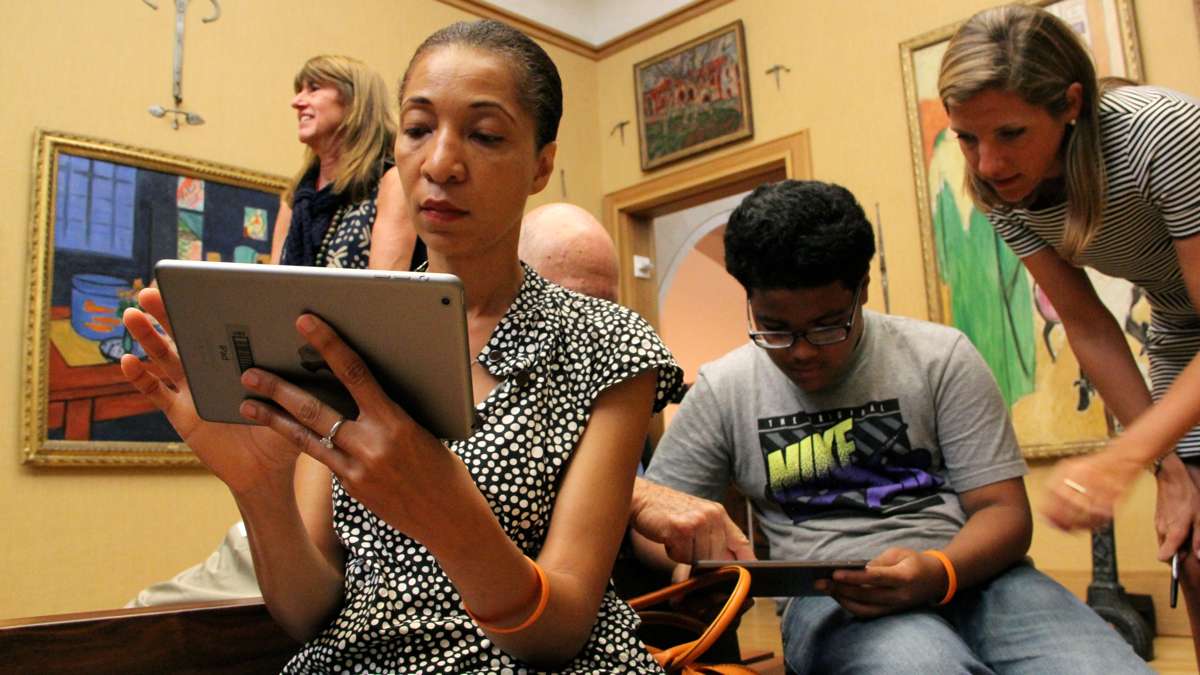‘Keys to Collection’ app opens interactive experience with Barnes collection [photos]
ListenThere is no “fun” in “museum.”
For decades fine-art museums have largely relegated gaming and interactivity to children’s museums, reserving their own galleries for quiet contemplation and erudition.
That has been slowly changing in recent years. Now the Barnes Foundation, on the Benjamin Franklin Parkway in Philadelphia, has launched a free mobile app (currently for iOS only) that allows kids to interact with the world-famous collection of modernist art.
“Coming here is a joyful, fun experience,” said Lynn Berkowitz, manager of family programming at the foundation. “Dr. Barnes played with these arrangments in a way that tickled his fancy. We wanted to take that notion to the public, to create their experiences.”
For three years, Berkowitz has been working on building a mobile application, “Keys to the Collection,” so anyone around the world can virtually explore the art collection via a self-created avatar that walks through the galleries. The avatar can jump into select paintings and walk around a constructed world of the art image.
If the user is in the galleries already, the app allows certain paintings to be “collected” by scanning canvases with the mobile device. The selected canvases are unidentified, so the user has to explore the ensemble walls to find those scannable works.
The game is guided by Fidele, Albert Barnes’ dog, who finds himself alone in the galleries whilst his master is away. The gamers are charged with helping Fidele restore the paintings, some of which are missing lines, colors or shapes. Some of the salon-style ensemble walls need rearrangement.
“Looking at art is not passive,” said Berkowitz. “This is a tool for deeper looking, and deepening family enrichment time.”
Technically, the app was developed by designers at Drexel University’s School of Education. As an educational tool, it is informed by the philosophies of John Dewey, a education reformer who was a close colleage of Barnes.
“Dewey emphasized engagement and experience,” said Bill Lynch, professor and former dean of the Drexel’s School of Education. “Game-based learning provides that engagement factor and experiential factor to facilitate creativity and transformative learning.”
However educational, the screen-based game faces the challenge of compelling kids to look away from the game long enough to see the art on the walls. The foundation offers other game-based art experiences, including an audio guide for kids, but those do not have the insular familiarity of a video game.
During a demonstration of the app inside Room 19 of the Barnes galleries, several area schoolchildren were given iPad Minis to figure out the game. As their individual avatars went into other rooms, the teenagers asked museum docents if they could also explore those other rooms.
“Every kid knew there were things tied to the real art, and wanted to look at the real art as they jumped into the world of the [virtual] art,” said Berkowitz. “It was really exciting that it worked. It worked!”
The app can be downloaded to any Apple device for free. The Barnes Foundation can provide a limited number of iPod Touches to gallery visitors.
WHYY is your source for fact-based, in-depth journalism and information. As a nonprofit organization, we rely on financial support from readers like you. Please give today.









